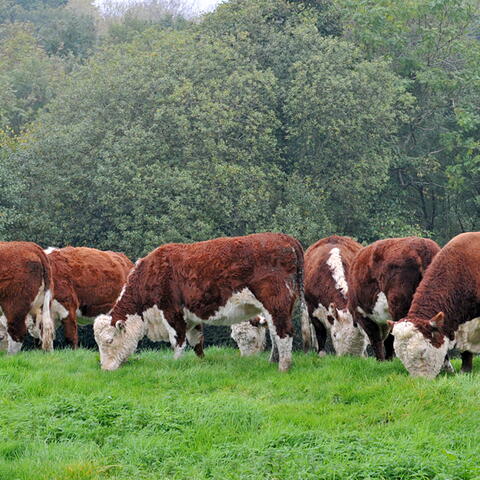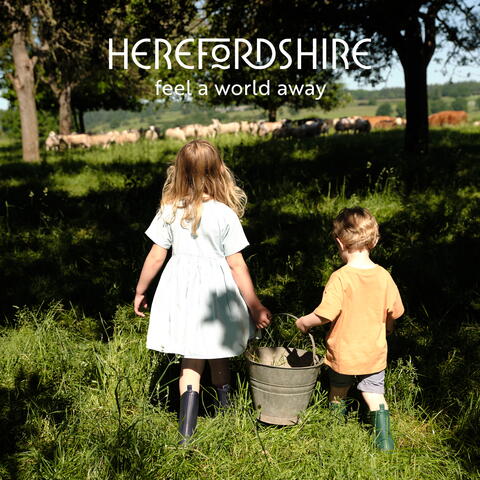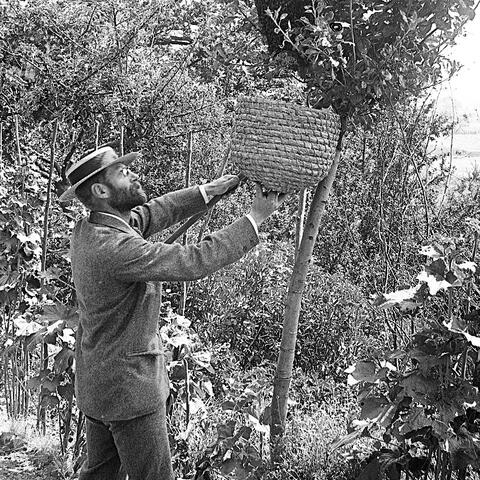Herefordshire’s Cider Story
By Elizabeth Pimblett, Director, Museum of Cider

‘I observed they are a diligent and laborious people, chiefly addicted to husbandry, and they boast, perhaps not without reason, that they have the finest wool, and the best hops and richest cider in all Britain.’
Daniel Defoe, 1724, following a visit to Herefordshire
One Big Orchard
Herefordshire’s fine cider has been praised for centuries. Cider has been drunk by every level of society, from farm workers to lords, and the county’s best drink was sent to London. The specialist orchards have shaped the countryside we see today. In the early 1700s, travel writer Celia Fiennes described Herefordshire as being ‘like a country of gardens and orchards, the whole country being very full of fruit trees and it looks like nothing else.”
In the 17th and 18th centuries Herefordshire Redstreak cider was prized across Britain and was even a serious rival to wine. In the 19th century, when industrialisation changed the face of Britain, cider production was modernised by some Herefordshire firms. This meant that in the early 1900s, the county had the biggest cider maker in the world: Bulmers. Their old factory is now the Museum of Cider. Bulmers, now under Heineken, still holds the title of the world’s biggest cider maker. And alongside the big brands, the ‘small producer’ craft cider tradition flourishes. Herefordshire has always been a county of cider innovation, from apple to bottle.
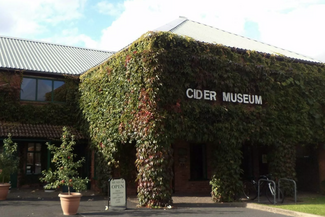
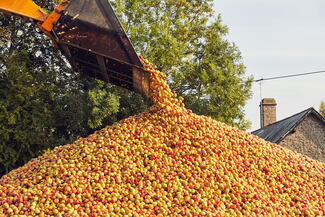
Historical Roots
One of the earliest local references to cider can be found in the library at Hereford Cathedral. The beautiful, hand-written Wycliff Bible is a 1420 copy of the Bible translated in 1384 from the original. It’s important for cider because it uses the early word ‘sidir’ to translate ‘strong drink’ into English. The Cathedral has other cider connections too. Look up at the pipes of the organ near the altar to see a plaque of a carved woodpecker, commemorating its restoration by the Bulmer family who used Woodpecker as a name for one of their earliest brands. And the respected 18th century poet John Phillips, who wrote about the glories of cider making and the county, is buried here too.
Cider has been made in Herefordshire since medieval times but it is in the 17th century that Lord Scudamore of Holme Lacy House (now a hotel) transformed cider-making across Britain and became an industry pioneer. Scudamore had been an ambassador to France and when the English Civil War started he was on the side of the King. When his career went badly he spent a lot of time on his Holme Lacy estate, improving his lands, discovering and raising new types of apple. Some say he brought back the Redstreak apple from Normandy, others that he found it in his orchards. He certainly propagated it and encouraged his Royalist land-owning friends to plant it too. It was also called ‘Scudamore’s Crabbe’ - an inedible fruit which produced a fabulous drink, even enjoyed by King Charles 1 on a visit. Estate records show villagers being paid to pick apples and make cider. Interestingly, Scudamore paid for the restoration of Dore Abbey – perhaps cider money made this happen?
In the 17th century cider became acutely fashionable and was discussed by the Fellows at the newly formed Royal Society. One such was John Beale of Yarkhill, a clergyman and influential writer on the subject of orchards and cider. He was a key contributor to John Evelyn’s survey book on trees ‘Sylva’, which argued that growing cider trees was a good economic idea. The young Redstreak tree quickly bore fruit so the reward for planting it was swift. It was soon planted elsewhere in the country but it always grew best in Herefordshire.
The extent of orchards has come and gone with the fortunes of cider. In 1883 when cider had fallen out of favour, and orchards had declined, Herefordshire still had 27,081 acres of trees, more than any other county. Luckily, Bulmers then rewrote the appeal of cider and sold it in parts of the country that had never heard of the drink before.
Traditions & Celebrations
Cider has always been produced on two levels: one for everyday, refreshing drinking and the other a higher quality beverage. In the 18th century, the wealthier members of society drank from stunning glasses with air-twisted stems and small bowls engraved with cider related motifs - an important collection of such vessels is on display at the Museum of Cider. At the same time, workers in the fields were given cider to drink as part of their wages, and it was taken out to them in small barrels known locally as ‘costrels’. Another Herefordshire term for a cider vessel was a ‘cider devil’, a cone of brass or tin with a handle which was used to heat cider up in the fire before pouring into mugs.
Drinking cider has been part of the traditions of the county. It has been poured in ‘libation’ onto the ground at Easter and has been poured on trees in January as part of the wassail to promote a good crop! The songs sung include a chorus of ‘Auld Cider’. A festive wassail bowl of cider would have ribbons attached to it but in later centuries a two-handled mug was passed around to share.
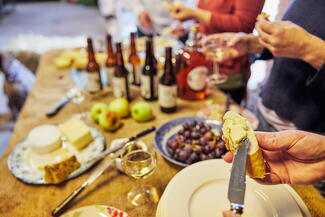
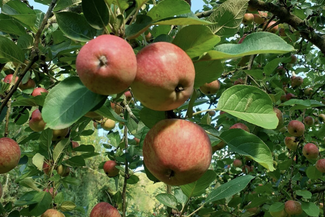
Cider Riots
When the government introduced a cider tax on domestic production in 1763 and gave permission for excise men to enter homes to check, the country was in uproar. Cider Riots occurred across the West Country in particular. In Ledbury, mock funeral processions were held with a barrel of cider on a bier and women dressed in black following behind. One of the heroes of the hour was Herefordshire M.P Velters Cornwall who fought against the tax in parliament. Another Herefordian M.P who was a powerful advocate for cider was Charles Radcliffe Cook. His nickname was the M.P for Cider! Not only did he promote the cider makers’ cause but he wrote a book on the subject and got cider stocked at the House of Commons bar. He lived at Hellens Manor, with its important avenue of rare perry pear trees, and had a close working relationship with his Much Marcle neighbour, the cider makers Westons.
Industry Boom
Rev Charles Bulmer passed his interest in cider making onto his sons Percy and Fred. They set up a firm in 1887 which bought in apples, introducing new machines as well as modern ways of working. They were able to produce cider on a far larger scale. They had a flair for marketing, courage and vision. Percy went to France to learn techniques to make champagne cider and they recruited a scientist who isolated a strain of yeast that could be relied on to produce consistently good cider, helping seal their success. Other local cider firms were getting going at the same time: Boulton, Evans, Godwins, Ridlers, the Pomona Cider Company. Westons was set up in 1880 and Symonds had been going since the 18th century. But Bulmers grew to be the biggest and changed the public’s understanding of what cider was. Their most famous brands were Woodpecker, No7, Pomagne and Strongbow. The firm sold reliable cider apple trees at cost, contracted local farmers to supply them with apples, undertook research, nurtured its workforce and became one of the county’s biggest employers.
Visit the Home of Apples & Cider
Cider making is a thriving industry in Herefordshire with numerous craft cider producers dotted around the county, many with multiple awards as well as organic certification to their name. There’s over 15,000 acres of orchards here, producing half of the UK’s cider. The springtime explosion of blossom is a glorious spectacle, whilst the sights and smells of the autumn harvest are unforgettable.Visit Herefordshire has created three Cider Circuits, each named after a local heritage variety, which tour the best local producers in the county - perfect on two wheels or by car.

